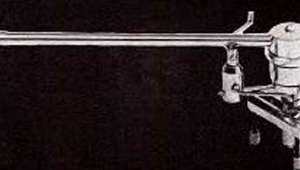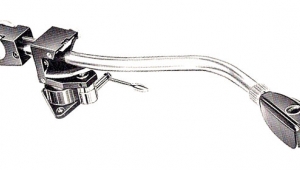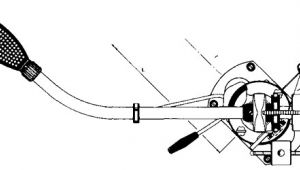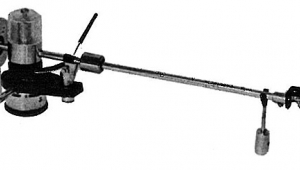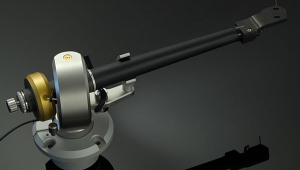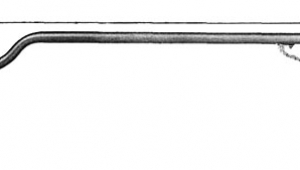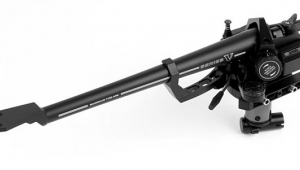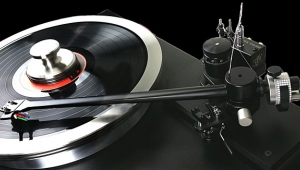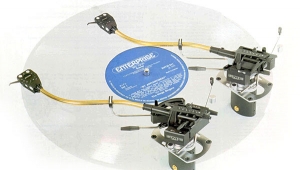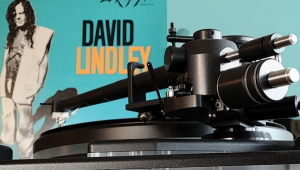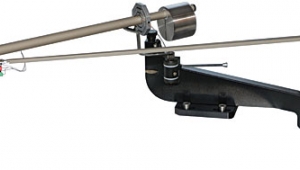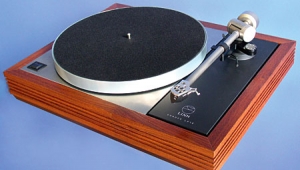| Columns Retired Columns & Blogs |
Naim Aro tonearm Page 4
Compatibility
As mentioned above, I've heard the ARO in a number of systems—and a friend has been using it on a Roksan Xerxes. In almost all systems, the ARO fit in without problems. The one exception was on the VPI HW19. Whether it was that turntable's acrylic mounting base, a setup error, or some other as yet undiscovered factor, the ARO was excruciatingly bad on the HW19. Bloated bass with no real extension, highly colored midrange, shrill highs, and no dynamics at all suggested a marriage made on one of the lowest levels of hell.
As mentioned above, I've heard the ARO in a number of systems—and a friend has been using it on a Roksan Xerxes. In almost all systems, the ARO fit in without problems. The one exception was on the VPI HW19. Whether it was that turntable's acrylic mounting base, a setup error, or some other as yet undiscovered factor, the ARO was excruciatingly bad on the HW19. Bloated bass with no real extension, highly colored midrange, shrill highs, and no dynamics at all suggested a marriage made on one of the lowest levels of hell.
With all other turntables (Linn Sondek, Phonosophie P3, Roksan Xerxes, Platine Verdier), terminated by either wood or metal, the ARO excelled.
Cartridges loved the way the ARO let them go about their business unflustered. Within the limits of its effective mass (11gm, which will make it a bad match for ultra-high-compliance pickups), I found no cartridge that didn't give of its best in the ARO.
Comparisons
Where does the ARO fit in the tonearm hierarchy? From the paeans of praise above, it should come as no surprise that I place it firmly in Class A—and I do have experience of all of the arms listed in Class A of "Recommended Components" in Vol.16 No.4.
In direct comparison with the ARO, the Linn Ekos, the ARO's obvious competition, sounded brighter and sharper, and, to my ears, considerably more "hi-fi." The ARO had a more natural presentation, with more body to voices and instruments, superior intelligibility of song lyrics, and a lower fatigue factor, but lost out slightly in bass tightness in the lowest octave of electronically generated music.
The SME V, in my experience, tends to have an overblown and rhythmically inarticulate bass in many combinations (Pink Triangles being a notable exception), a tendency that seemingly can't be completely eliminated by damping adjustments. It also has a midrange that is tonally very neutral but dynamically muted, and limited resolution of microdynamics. Voices just don't soar as they should. The ARO's fun factor is considerably higher.
I've had less experience with the Eminent Technology ET 2 and Graham 1.5t than with the other two arms, and so don't want to make too strong a statement, but I don't think they can hold a candle to the ARO in the boogie department. The ET 2, on the other hand, presents an even more spacious soundstage and possibly even lower distortion, due to its superior geometrical accuracy.
The Wheaton (Clearaudio) Triplanar has yet to be formally reviewed by Stereophile in its latest incarnation. In my—again, limited—experience, it seems free of the ARO's slight low-end limitations, but leaner tonally. Otherwise these very different designs sound surprisingly close.
Conclusion
In all the time the Naim ARO has been in almost constant use in my system, it has proved very reliable: Nothing has broken or otherwise gone wrong, despite numerous cartridge installations. The ARO is genuinely fun to listen to, compatible with a wide range of turntables, cartridges, and systems, and belongs in Class A. That it comes at a price below that of most of its direct competition is icing on the cake. Highly recommended.
- Log in or register to post comments
